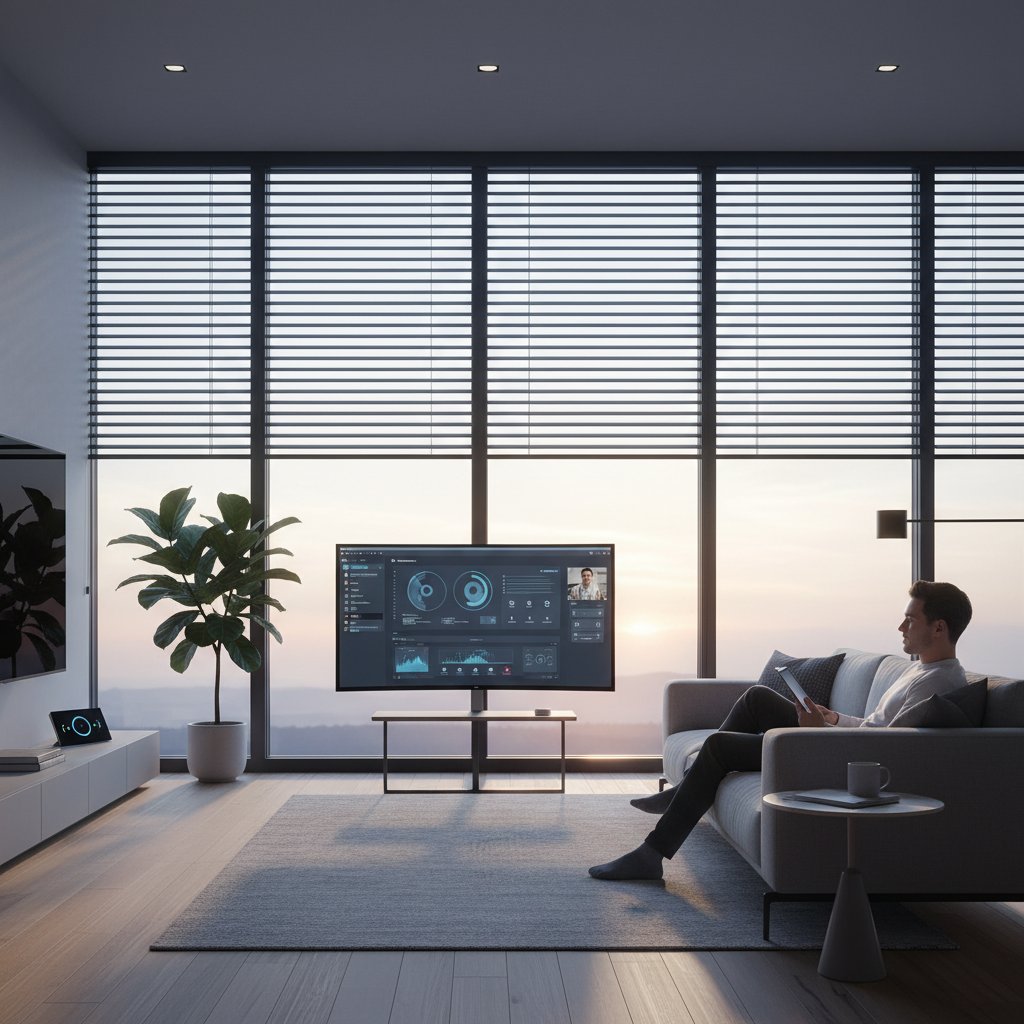Smart Blinds That Automatically Block Screen Glare
Sunlight streaming through windows brightens a room, yet it often creates glare that obscures laptop screens or televisions. Homeowners frequently face this challenge, adjusting shades manually to maintain visibility. The latest smart blinds address this issue by automating adjustments in real time, ensuring clear screens, comfortable spaces, and reduced energy use.
Smart home systems now extend to window treatments, integrating with lighting, thermostats, and security for a cohesive experience. These blinds learn user patterns and respond to environmental changes, transforming homes into intuitive environments that prioritize comfort and efficiency.
Understanding Screen Glare Challenges
Glare disrupts more than viewing; it reduces productivity, strains eyes, and alters display colors. Professionals working remotely, gamers, or viewers encounter interruptions from shifting sunlight. Traditional solutions demand frequent manual tweaks, which prove impractical during busy routines.
Smart blinds employ sensors and automation to counteract these effects. They adjust positions based on light intensity, eliminating the need for constant intervention and creating glare-free zones effortlessly.
Core Features of Adaptive Smart Blinds
Sensor-Driven Adjustments
Advanced light sensors monitor room brightness continuously. When sunlight intensifies, the blinds tilt or descend to diffuse rays, preserving optimal visibility.
This capability minimizes eye fatigue during tasks like video editing or calls. For instance, Hunter Douglas PowerView uses integrated sensors for incremental changes, blocking glare proactively.
Seamless Smart Home Integration
These blinds connect to platforms such as Google Home or Apple HomeKit. They coordinate with thermostats to lower shades during heat buildup, easing cooling demands.
Such synergy maintains balanced lighting and temperature. Lutron Serena shades exemplify this, responding to voice commands or routines for effortless control.
Learning Algorithms for Prediction
Predictive systems analyze sunlight paths and user habits to anticipate glare. Over weeks, they refine schedules, automating adjustments without prompts.
Proactive operation sustains workspace comfort. Somfy TaHoma records preferences and executes them daily, ensuring consistent conditions.
Light Diffusion for Ambiance
Materials in smart blinds scatter light softly, avoiding total darkness. This approach retains natural illumination's benefits for mood and focus.
Rooms stay inviting during intense sun. IKEA Fyrtur blinds filter rays effectively, adjustable via app for personalized settings.
Energy and Cost Benefits
By shading windows at peak solar times, these systems lower indoor heat and air conditioning needs. Research indicates reductions in cooling energy by up to 30 percent.
Savings accumulate, justifying initial investment. The blinds support sustainability while enhancing daily comfort.
Automated Privacy Controls
As dusk approaches, blinds close to shield interiors from outside views. Motion sensors or timers enhance this function, pairing with daytime glare protection.
Security improves without sacrificing light. Users set parameters to align with routines, simplifying evening transitions.
Manual Overrides via Apps and Voice
Apps and voice assistants allow precise tweaks for specific needs, like partial closure for conferences. Responses occur swiftly, blending automation with user input.
This control empowers customization. A command such as lowering living room shades halfway executes instantly.
Stylish and Quiet Design
Contemporary designs feature hidden motors and diverse fabrics that match interiors. Operations remain silent, preserving room aesthetics.
Functionality integrates unobtrusively. Eve MotionBlinds prioritize smooth, whisper-quiet performance for refined spaces.
Support for Wellness Routines
Integration with circadian systems modulates daylight to align with biological clocks. Morning openings mimic dawn, aiding natural wakefulness.
Health benefits include better sleep and energy. Tunable setups foster environments that promote overall well-being.
Long-Term Compatibility
Standards like Matter enable cross-brand communication, future-proofing installations. Devices adapt to evolving smart home advancements.
This versatility extends usability. Homeowners avoid frequent upgrades, ensuring sustained value.
Daily Benefits in Action
Picture a workday free from screen washout: blinds angle sunlight precisely, supporting clear visuals. Afternoon warmth triggers subtle descents, stabilizing temperatures. Evenings bring automatic privacy without dimming ambiance.
Remote workers gain sharper focus, gamers enjoy vibrant displays, and families watch films distraction-free. Beyond screens, consistent climates reduce thermostat fiddling, while system syncs streamline routines.
Addressing Common Concerns
Initial costs vary, but declining prices and energy savings mitigate expenses. Wireless models simplify installation, often requiring no professional help.
Verify ecosystem compatibility upfront to prevent issues. Low-maintenance designs include durable motors and over-the-air updates for reliability.
Enhancing Modern Living Spaces
Designers incorporate smart blinds to optimize light and efficiency from project outset. Retrofits modernize older homes, boosting appeal and value.
Windows evolve into interactive features, blending environment with occupant needs. This shift elevates homes toward sustainable, responsive living.
Steps to Implement Smart Blinds
Assess problem windows by tracking sunlight patterns. Select models with sensors, app control, and ecosystem integration.
Prioritize energy-efficient fabrics and quiet mechanisms. Test compatibility, opt for DIY if suitable, or hire experts for precision. These additions create glare-resistant, efficient homes tailored to your lifestyle.
